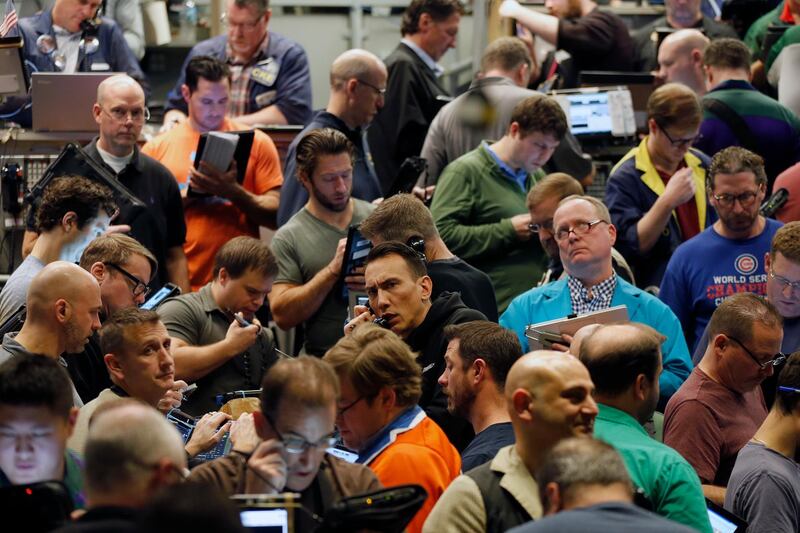It’s no coincidence. Stock market selloffs, volatility blow-ups, collapsing cryptocurrencies. They’re all the symptoms of an unfolding global credit squeeze, according to famed HSBC Holdings bond guru Steven Major. It just happens to be developing at a snail’s pace.
Mr Major and his team see what they call a “long list” of selloffs in risk markets across the world as evidence of the disruption wrought by tighter dollar liquidity. In response they’ve slashed their forecast for bund yields, turned more bearish on credit and become even more cautious on emerging-market debt.
“Market participants are typically looking for validation of a forecast from cyclical data or one-off events but the reality can be different,” the bank’s global head of fixed-income research wrote in a note last eek. “We appear to be in the midst of a slow-motion credit crunch.”
The concerns reflect a wider angst growing across financial markets, which started the year in melt-up euphoria but reached the half-way mark in turmoil. Rising US rates, the demise of the easy money era and President Donald Trump’s approach to the established trade order have combined to drain cash from riskier assets.
For evidence the investment environment has got more challenging, look no further than Goldman Sachs Group’s US Financial Conditions Index, which tracks changes in interest rates, credit spreads, equity prices and the greenback to provide a barometer of financial health. Having hit the lowest in almost two decades in January - signaling easy conditions - the gauge has performed a volte-face, and is steadily marching higher.
_______
Read more:
Will higher US interest rates and the stronger dollar destroy the stock market?
Buying gold and dumping stocks is a no-brainer this summer
The cheapest stock markets to invest in around the world
_______
The diminishing appetite for risk is one of the reasons HSBC cut its year-end forecast for 10-year bund yields to 0.4 per cent from 0.75 per cent, and even predicted a drop toward 0.2 per cent in the short term. A downward reassessment of European Central Bank rate hike expectations, plus the potential for further turmoil in the governing German coalition, have added to the conviction.
Mr Major acknowledges predicting bund behaviour may be tricky, but proposes a possible solution: look east. As the ECB reinvests cash from its maturing bond pile, it may take a page from the Bank of Japan, which uses yield curve control to keep short-term and long-term rates at specific levels.
Since Haruhiko Kuroda and fellow policymakers introduced curve control in September 2016, JGB yields have not sustained a move above 10 basis points, according to Mr Major. The Japanese 10-year benchmark currently yields 0.03 per cent.
In developing markets, HSBC said the time has come to take a “selectively cautious stance” on local debt, alongside a bearish position on hard-currency obligations. Meanwhile, the bank has moved back to “mildly bearish” for both investment grade and high-yield European credit.
That view chimes with a host of Wall Street strategists and asset managers, many of who have been finding ways to short a credit cycle that looks increasingly long in the tooth. Money managers last month turned underweight European credit for the first time in seven years, according to a Bank of America survey.
“The autumn may bring further Italian volatility, ongoing trade headlines, and anticipation of the final fizzling-out of ECB purchases,” HSBC strategists including Jamie Stuttard wrote.
Bloomberg






